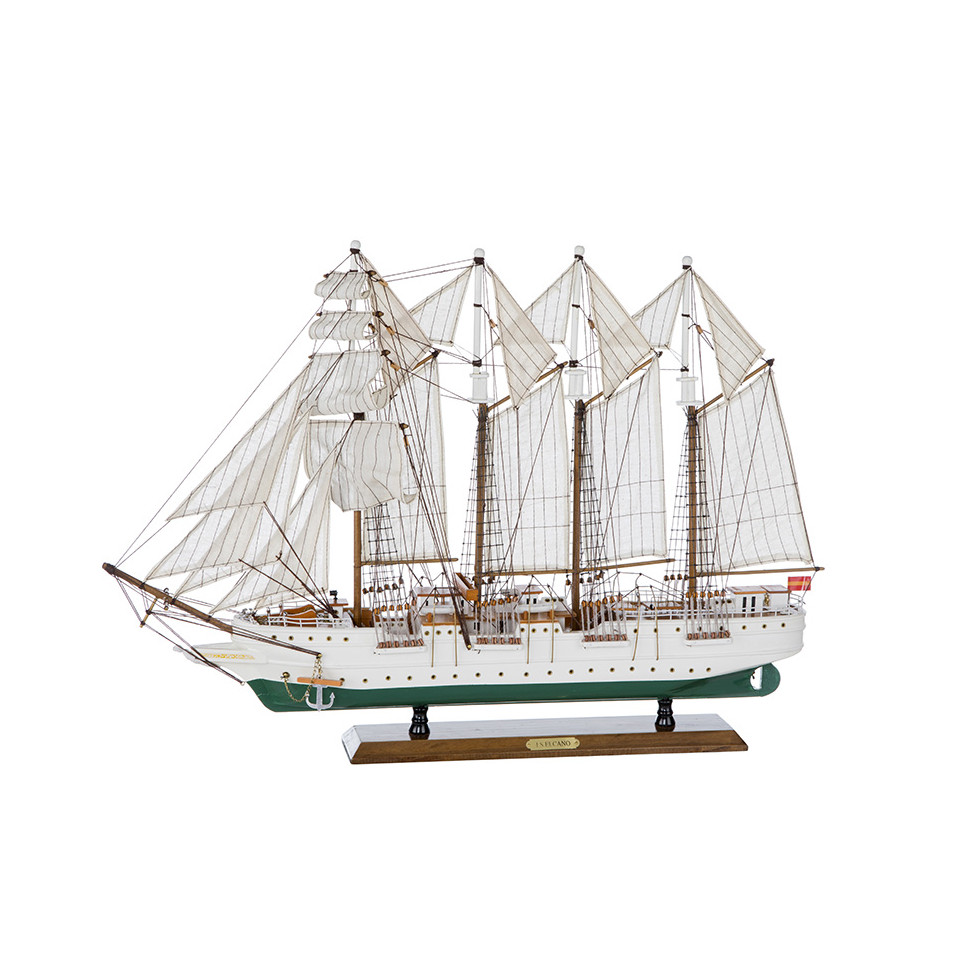

| Los pedidos realizados el día 25 de Julio, se procesarán el día 26 por fiesta local. |




The training ship Juan Sebastián de Elcano (1929) is a barquentine in the Spanish fleet. She is named in honor of the basque explorer Juan Sebastián Elcano, who took command of Ferdinand Magellan's expedition to circumnavigate the world following the Portuguese explorer's death.
Fully assembled model. Hand-painted and handmade from wood.
Measures: 73x48x11.5 cm
The training ship Juan Sebastián de Elcano (1929) is a barquentine in the Spanish fleet. She is named in honor of the basque explorer Juan Sebastián Elcano, who took command of Ferdinand Magellan's expedition to circumnavigate the world following the Portuguese explorer's death.
Fully assembled model. Hand-painted and handmade from wood.
Measures: 73x48x11.5 cm
Llaüts are small boats typical of the Mediterranean. Their stable design makes them ideal for recreation and sport fishing. Their first builders were known as "mestres d'aixa". Fully assembled model. Hand-painted and handmade from wood.
The Amerigo Vespucci (1930), named after the renowned Italian cartographer, is the oldest training ship in the Italian Navy. Used to train naval cadets, it is one of the oldest and largest training ships in the world.Fully assembled model. Hand-painted and handmade from wood.
Fishing boat used predominantly for fishing crabs, spider crabs and lobsters. Rustic nautical model boat hand made in wood.
The Endeavour (1934) was built to class J rules to sail in the 1934 America's Cup. She was commissioned by Sir Tom Sopwith and built by Camper & Nicholson in Gosport (England), who used aviation technology to give her more speed. Handcrafted sailing boat in wood. Packaging: Dismantled mast.
Typical basque boat originally created for tuna fishing. They are characterized by a raised prow that protects them from the battering of the waves.Fully assembled model. Hand-painted and handmade from wood.
The Optimist is a sailboat designed for novices in 1947 by the architect Clark Mills (Florida). Its lightweight and stable design, single-masted with a flat bottom, makes it simple to maneuver. Fully assembled model. Hand-painted and handmade from wood.